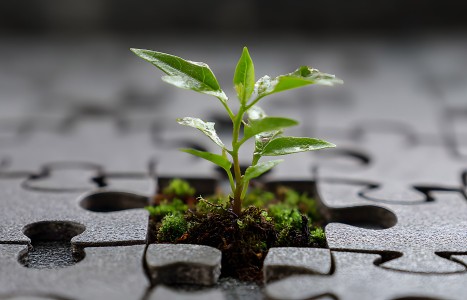When we talk about fertility, the focus is often placed on the ovaries and the uterus. Yet sperm-related factors contribute to nearly half of all cases of infertility. Whether someone is navigating fertility care alone or with a partner, and whether building a family through intercourse, IVI, IUI or IVF, it’s vital to include sperm health in the picture.
A Brief Discussion of Yin and Yang
Much of Traditional Chinese Medicine (TCM) is based on the concept of Yin and Yang. We have all heard these words used and seen the familiar graphic most of us call the "Yin Yang" symbol often enough that we may take for granted that we understand what they mean. However, the concept of Yin and Yang and the symbol, also called the Tai Chi symbol, are more complex and deeper than some may realize. In a future article, I plan to discuss how these ideas can apply in TCM. In this piece my goal is to begin to introduce the idea of Yin and Yang as a general concept.
The Chinese character for Yin relates to the side of a hill that is shaded and the character for Yang represents the sunny side of the hill. Thus, Yin relates to dark and Yang to light. In general, all objects and phenomena can be categorized as Yin or Yang. These are often illustrated in opposing pairs, as in the following examples:
| Yang | Yin |
| light | dark |
| heat | cold |
| energy | form |
| fire | water |
| movement | stillness |
| expansion | contraction |
However, Yin and Yang are relative concepts, so that a thing is not necessarily Yin or Yang objectively, but rather relative to other things. So while fire would be yang relative to water, water could be said to be Yang relative to ice, since water has more movement and heat and is less substantial than ice.
Yin and Yang can also be seen as two phases of a cycle, such as night and day. Night becomes day and day becomes night. Every phenomenon in life can be understood this way, and each stage in the cycle contains some aspect of Yin and some aspect of Yang. Let's look closer at the night and day cycle to illustrate this point. At noon, the sun is high in the sky. This is the point of greatest Yang, when it appears that there is only day, and no night at all. This can be called Yang within Yang. Even at this point, the seed of Yin is present, for one minute after noon, Yang begins to diminish, and Yin begins to grow. That is to say, the sun starts to descend towards the horizon, and there is one bit less of light and heat, and correspondingly one bit more of cold and dark. Sunset is the time half-way between midday and midnight. It is equally Yang and Yin. It can be called Yin within Yang. Yin continues to increase and Yang to decrease as the cycle approaches midnight. Midnight is the time of maximum Yin, called Yin within Yin, when it appears there is only darkness with no light. Yet at one minute past midnight, the day is already beginning to grow. Sunrise is Yang within Yin; the amount of Yang (daylight) surpasses the amount of Yin (darkness), yet much Yin is still present (it's still somewhat dark) and remains present though diminishing until noon, when the cycle starts again.
Yin and Yang are not only complimentary and inseparable, but two parts of one whole. They are not two separate entities that can exist independently, but are two aspects of one. There is no day without night and there is no night without day.
The idea of the Yin and Yang relationship may be summarized by the following 4 principles, as described by Giovanni Macicocia in The Foundations of Chinese Medicine:
- The opposition of Yin and Yang
- The interdependence of Yin and Yang
- The mutual consumption of Yin and Yang
- The inter-transformation of Yin and Yang
Again, the example of day and night can help to illustrate these principles.
- The opposition of Yin and Yang
Night and day are opposed to each other and are defined in opposition to each other. - The interdependence of Yin and Yang
Day requires night to exist as day, and night requires day to exist as night. There cannot be one without the other. - The mutual consumption of Yin and Yang.
After noon, as the darkness grows and the light lessens, Yin consumes Yang. After midnight, as darkness lessens and light grows, Yang consumes Yin. Each consumes the other. - The inter-transformation of Yin and Yang
Day and night constantly transform the one into the other.
The Tai Chi symbol and the concept of Yin and Yang are simple, yet deep. It is apparent from the symbol that Yang becomes Yin, Yin becomes Yang, Yin overtakes Yang and Yang overtakes Yin and each contains the seed of the other. It is also apparent that the two are always in perfect balance. What may be less obvious is that both are contained within a single circle, representing that they are part of an inseparable whole, the Tai Chi circle.
From the dualistic perspective there is Yin and there is Yang. From unity perspective, there are not two but only one. The seemingly paradoxical reality is that both are true. This is its own Yin Yang balance.
As you walk through life, it is an interesting and useful exercise to try to observe the phenomena around you and within you and to try to identify and observe the Yin Yang relationships.


